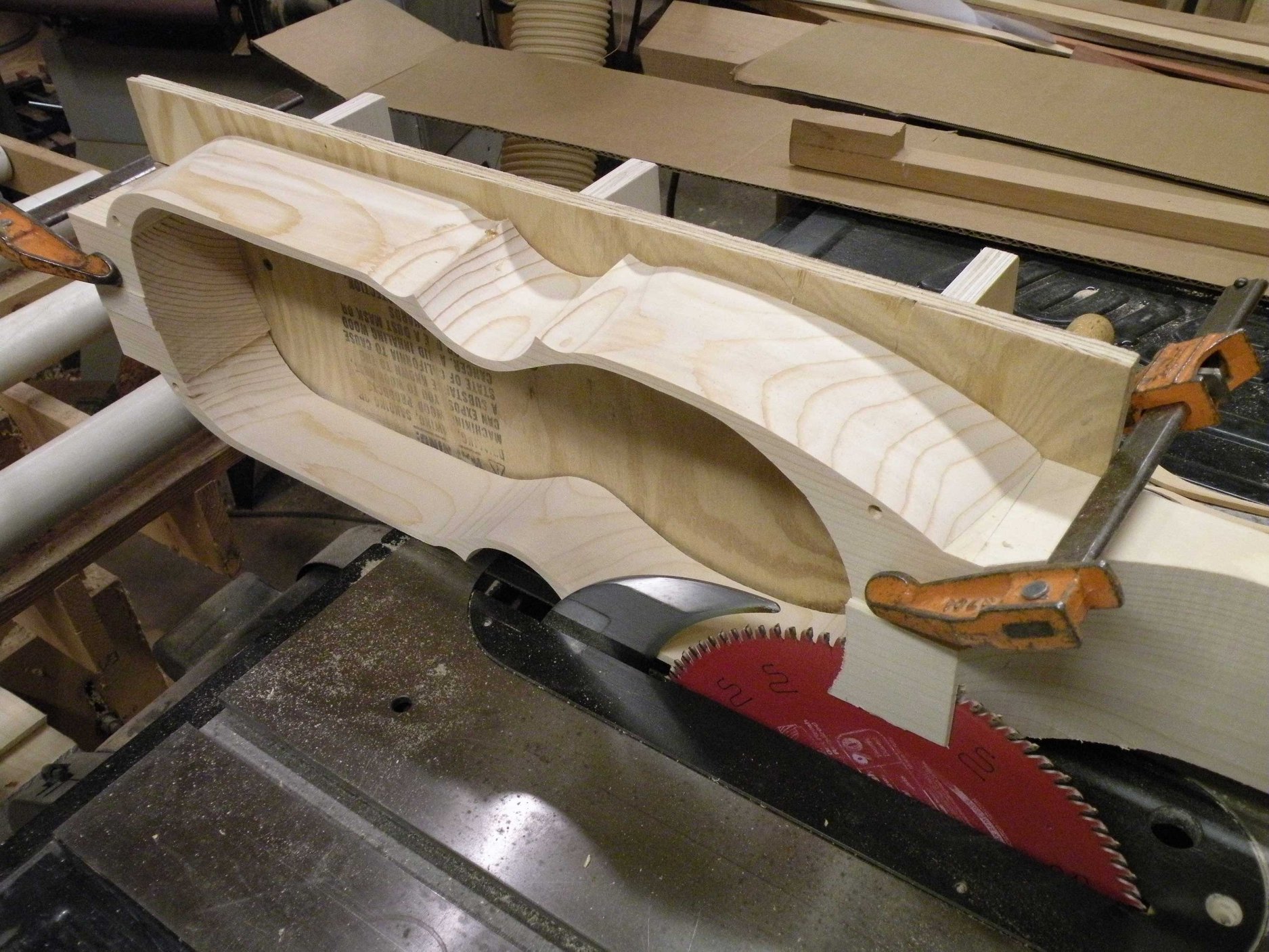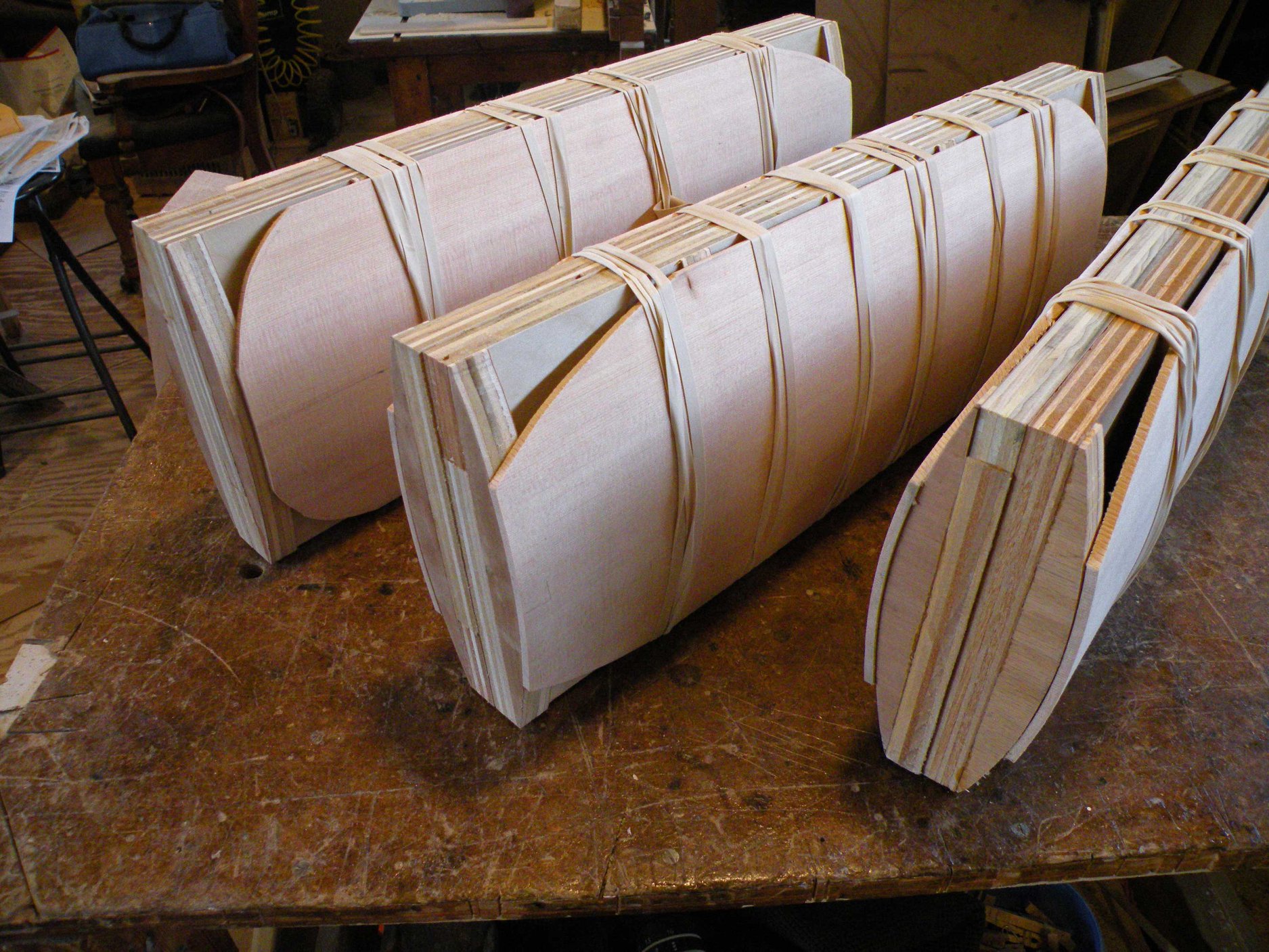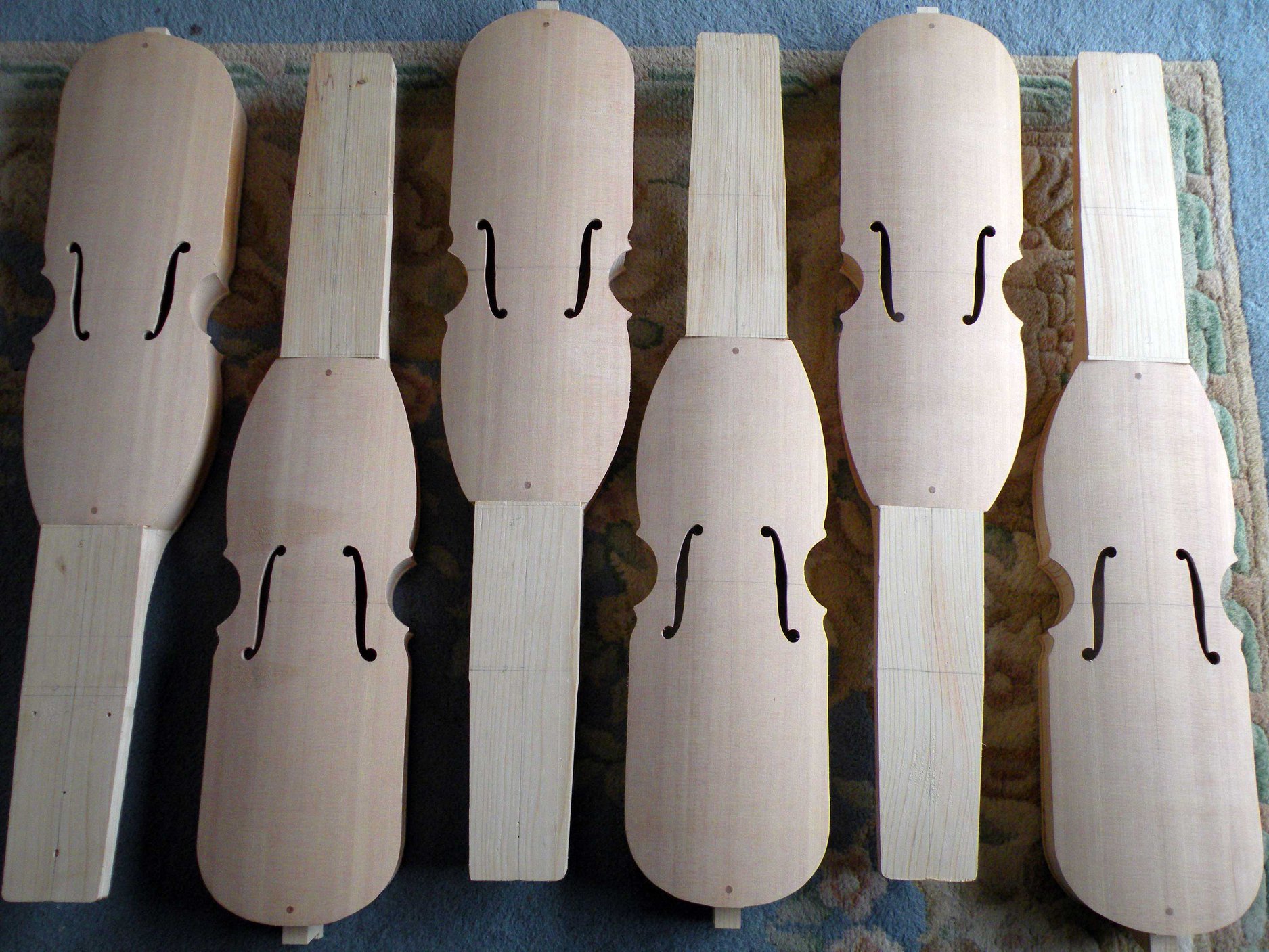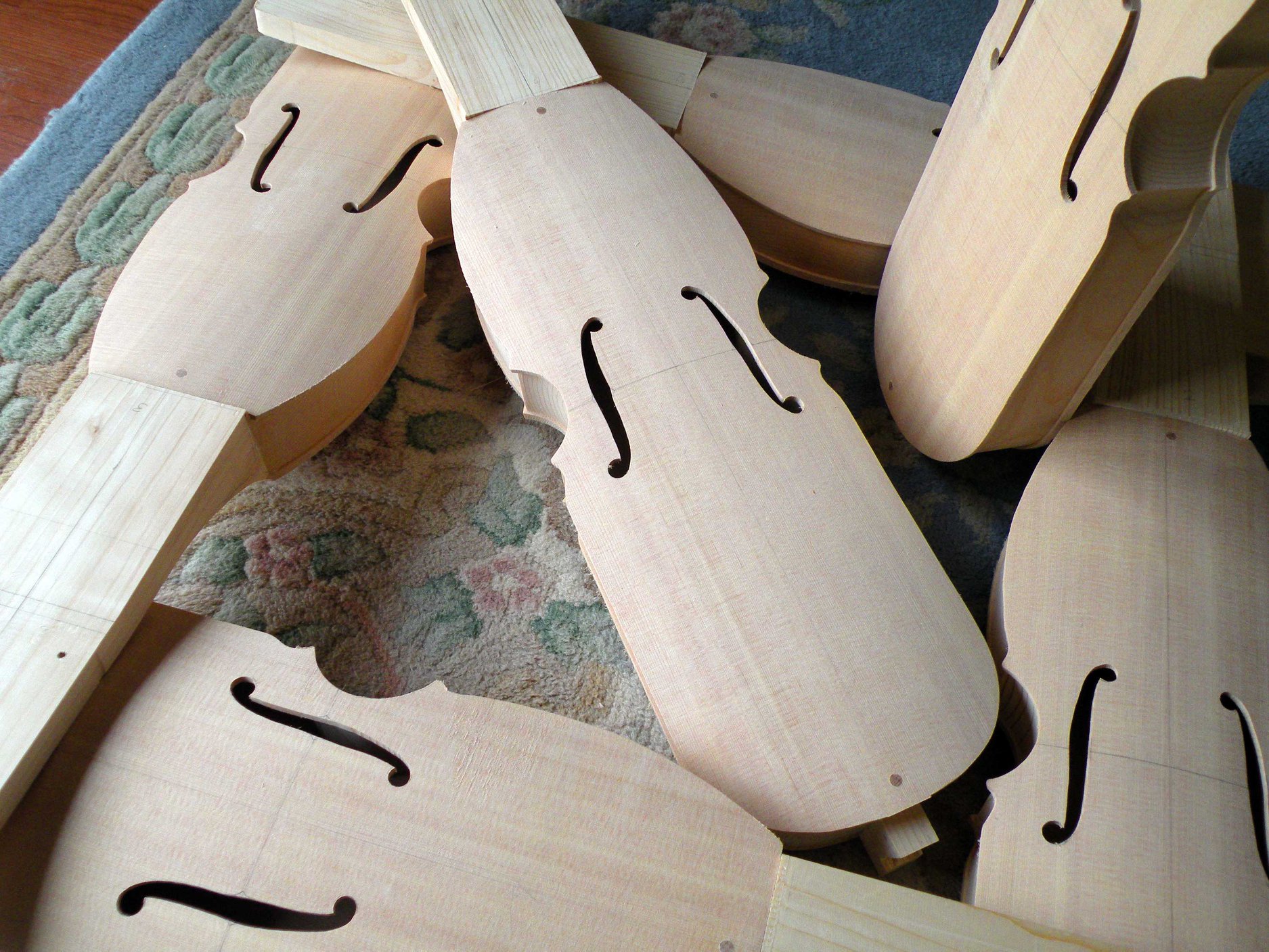Nyckelharpas
∼Cloud Nine∼ Musical Instruments now builds traditional Swedish nyckelharpas!
The Nyckelharpa is sometimes called a keyed fiddle. The Swedish word "nyckel" means key and the word "harpa" means a stringed instrument. There are four bowed strings and twelve sympathetic strings that resonate with the bowed strings. The sound is magical and pensive.
Cloud Nine Musical Instruments has 6 new nyckelharpas in the making! They have very fine Sitka Spruce tops and backs, and Spruce from Michigan in the neck, tail block, and sideboards.
Michael's first three nyckelharpas are made of solid quartersawn spruce. This includes the neck, sides, back and top (the whole body). Hard quartersawn rock maple is used for the keyguides, the keys and tangents, the peghead overlay, the bridge and the tailpiece. All wood except the bridge is carefully color stained and varnished.
Michael makes the traditional Swedish 3-row fiddle, with strings C-G-C-A. The G string has 7 keys, the higher C string has 10 keys, and the A string has 20 keys. The low C string is used as a drone.
To see and hear Michael's first nyckelharpa, watch this video:
Nyckelharpa #1
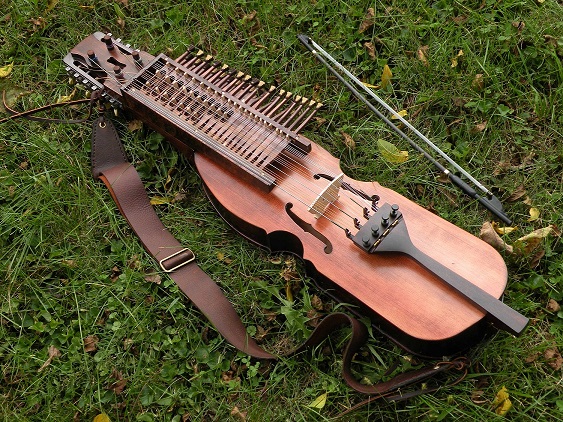
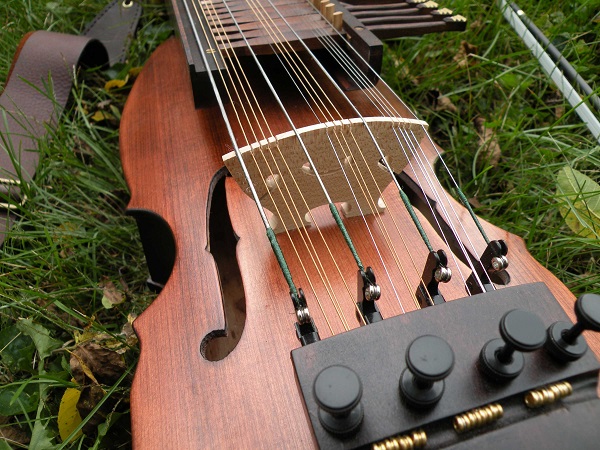

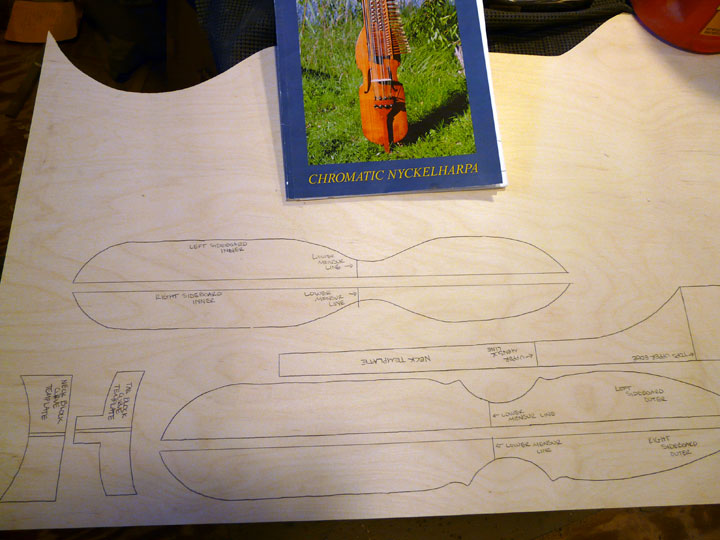
Nyckelharpa #2


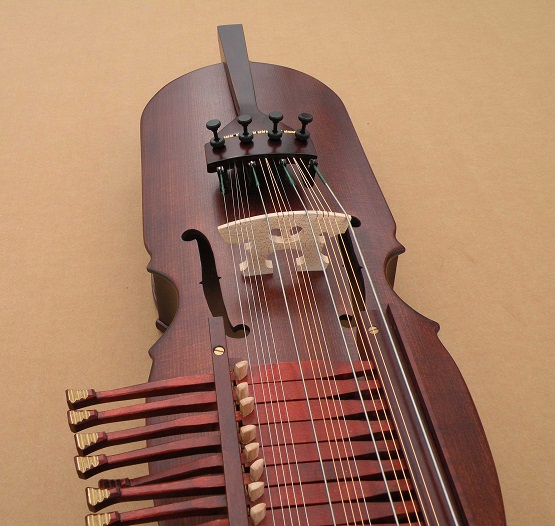
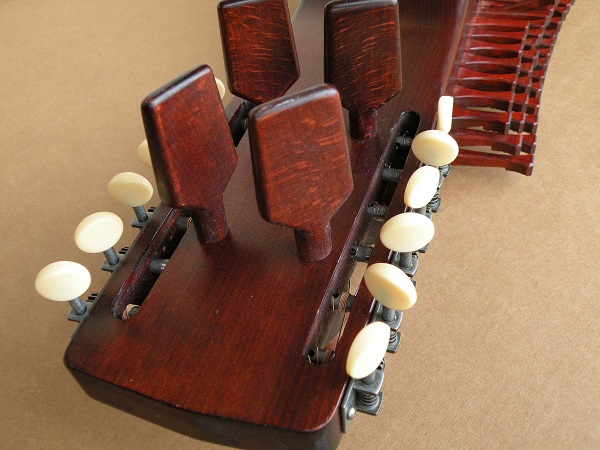
Nyckelharpa #3

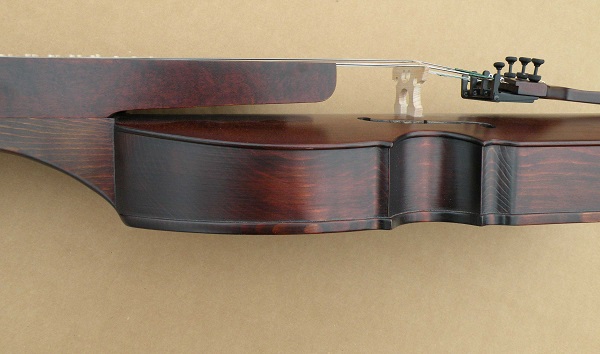

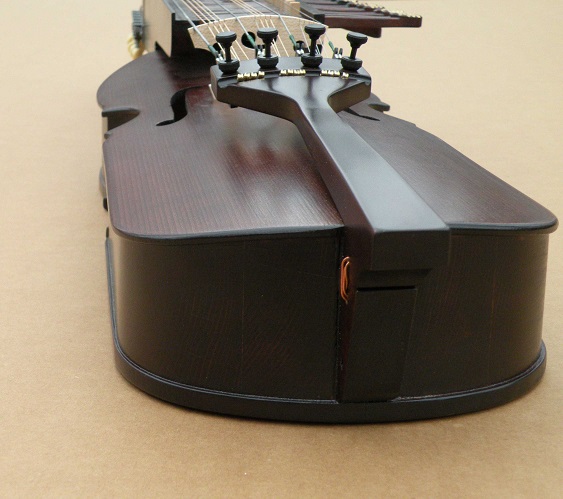
Future Nyckelharpas!
This next set of nyckelharpas is made of Sitka Spruce. Sitka is a variety of Spruce which grows along the west coast of the United States and Canada, and the corresponding east coast of Asia. Sitka Spruce trees can be huge and this helps with finding large clear (free of knots) straight grained pieces for musical instrument construction. Trees that grow farther north and at higher altitudes have slower growth and as a result finer grain lines (more grain lines per inch).
In general, finer, straighter grain results in stronger, more resilient wood which sounds better in musical instrument construction. Having a high strength to weight ratio results in wood which more responsive to vibration. In other words, the vibrating string can move the less dense but high strength Spruce wood more readily than the vibrating string can move denser wood (such as hardwoods) which results in a louder, clearer, and more high fidelity (reproducing a wider range of frequencies from low pitches to high pitches) sound.
The Sitka Spruce in the tops and backs of these nyckelharpas is especially good in that it has very fine, straight grain, similar to the best Alpine and Swedish Spruce traditionally used in Scandinavia for nyckelharpa construction. I found this Sitka Spruce at a lumber yard in Michigan and the boards were 18 feet long and 9 - 10" wide, perfectly clear, fine and straight grained... ideal for musical instrument construction.
The boards are also wide enough for one piece tops and backs (no glue joints) which is good for nyckelharpa construction since the top is placed in boiling water for a half hour or so in order to bend the flat piece into a curved section of a cylinder in making the nyckelharpa top. The result will be a relatively louder, clearer, "sweeter" sound (more overtones evident).
Maker Photos
